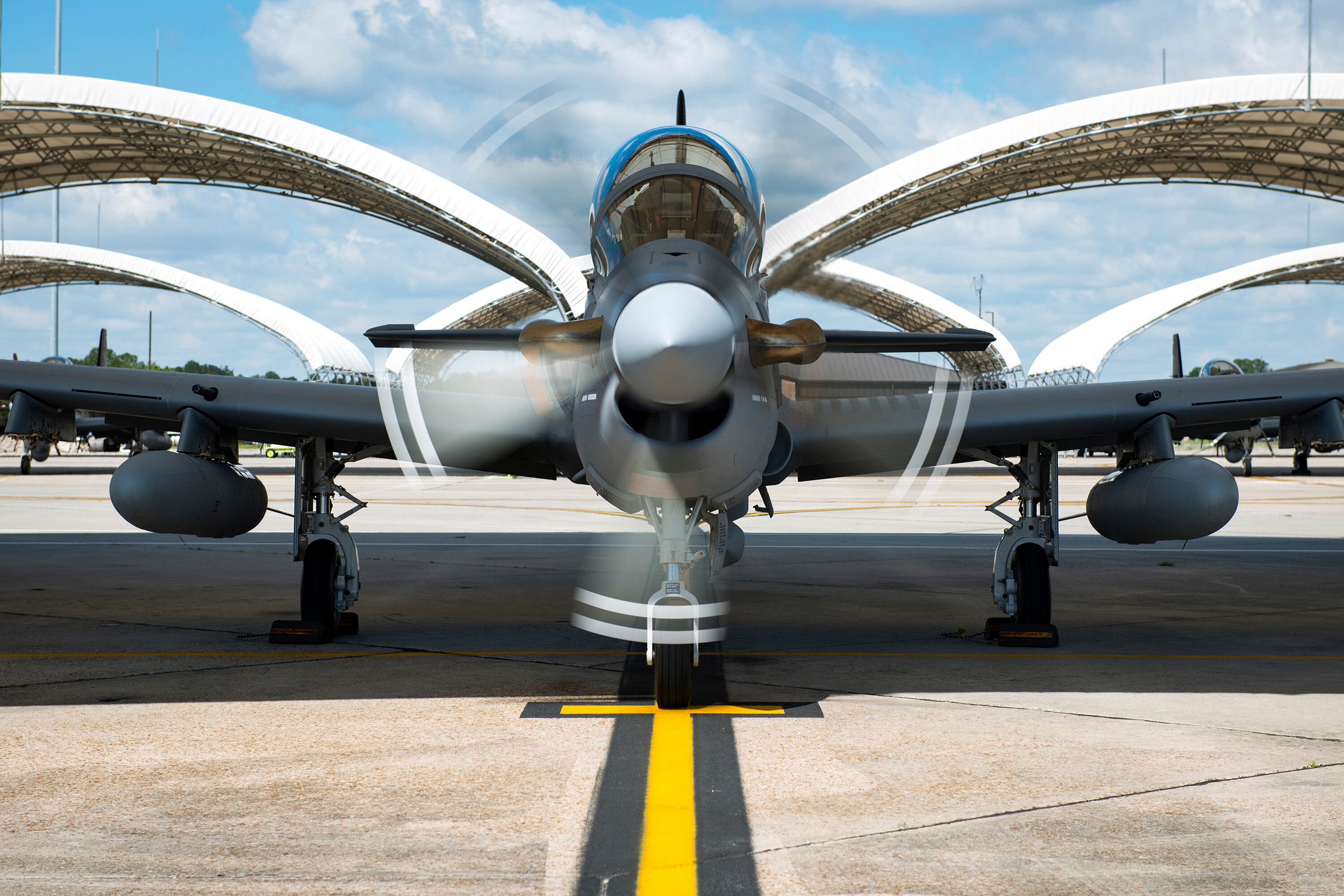Congress is finalizing the 2020 National Defense Authorization Act and one of the key issues is the future of the Air Force’s meager light-attack aircraft program. It’s a program that has struggled to gain traction with Air Force leadership since the first iteration appeared in 2009 despite major engagements in irregular warfare in austere locales all over the world.
Small teams of special operators on the ground engage in unconventional warfare in very remote locations, partnered with local allies to provide our nation a strategic economy of force. Their success depends on the immediate ability to synchronize on-call combat power to overwhelm the enemy at the critical point and time. A key component of that combat power is American airpower.
Without it, those same special operators have with them only what they carry on their backs.
Today’s special operators’ missions still demand a rugged, highly maneuverable plane that can loiter and throttle-down so low and slow that pilots can visually acquire a target and destroy it with highly controllable fire if necessary. Why? Because brave American special operators will be on the ground in very close proximity to that target. Light-attack planes can operate on remote airstrips with little maintenance very close to these isolated forces.
But the Air Force recently terminated its program to acquire an affordable light-attack plane optimized for these types of missions. Instead, the Air Force intends to purchase three planes from two different manufactures to continue further experimentation and evaluation.
RELATED

The chief of staff of the Air Force stated that “continuing this experiment, using the authorities Congress has provided, gives us the opportunity to put a small number of aircraft through the paces and work with partner nations on ways in which smaller, affordable aircraft like these can support their air forces, ” intimating that the newly purchased aircraft will only be used to facilitate the training of allies that currently own or plan to purchase light-attack platforms. It does not appear that the Air Force has any intention to build U.S. operational squadrons to provide close-air support to U.S ground forces.
The result is plainly foreseeable: years more delay and an Air Force inventory comprised almost exclusively of magnificent aircraft highly capable of dominating the skies — but at the expense of optimal support to American troops on the ground.
The irony, of course, is the Air Force once recognized such a need for an agile, simple to maintain aircraft capable of flying at treetop level to deliver responsive, close-in fires to troops engaged in complex terrain. The jets in the Air Force inventory at the time — the early years of the Vietnam War — were ill-suited for the mission, but the Navy had a powerful, prop-driven plane which was perfect for it.
Rather than accept the delay and huge expense of developing their own bird, the Air Force bought 150 of the type of plane the Navy was using and renamed it the A-1E Skyraider.
That decision saved American lives — and it also saved American taxpayers enormous up-front costs for research, experimentation, development and time.
We can do something similar now, but the Air Force has been dithering for over a decade. I say let the Special Operations Command (USSOCOM) do it. SOCOM Commander Gen. Richard Clarke said a light-attack platform is essential for its forces and the mission it serves. “Light attack is a need for SOCOM, and I think it’s a need for our nation,” Clarke said during a House Intelligence and Emerging Threats and Capabilities Subcommittee hearing this past April.
This is why I’m sponsoring legislation with fellow Floridians Rep. John Rutherford and Sen. Marco Rubio to move this light-attack capability from the Air Force to U.S. Special Operations Command. Our special operators need light attack. We shouldn’t make them wait.
At the same hearing, Mark Mitchell, the former acting assistant secretary of defense for special operations and low-intensity conflict, said: “From our strategic perspective, we think the flight hours for those fifth-generation fighters are best spent preparing and deterring our near-peer competitors.”
Consider our 5th generation aircraft, the F-35 joint strike fighter, the most capable, multirole fighter in the world. Some may argue that it should assume the bulk of the close-air support and battlefield air interdiction missions for our special operators, but others disagree. Last month, Sen. Tom Cotton, R-Ark., raised a solid point that there are not enough spare parts to keep F-35s flying often enough to meet the needs of our warfighters. He asked the incoming Air Force secretary why, given this shortage, we’re still using stealth fighters overseas to “bomb terrorists in mud huts.”
While we can be proud and grateful for its capabilities, the F-35 is also the most expensive weapon system in history. The price tag of a single unit alone is over $90 million per plane and its operating cost is more than $42,000 per hour compared with light-attack planes, which cost $12 million per aircraft, with an operating cost of about $2,000 per hour.
Light attack is clearly more affordable — and in the end, we get only the weapons and strategies we can afford. The Senate allocated $210 million for six light attack aircraft in the 2020 National Defense Authorization Act — and that’s a wise move. But I have lost confidence in the Air Force to push this capability to the warfighter with a sense of urgency.
It’s time to let USSOCOM take charge of light-attack aircraft so our special operations forces have the best tools they need to be fully equipped to complete their missions at the most reasonable cost to the American taxpayer.
Rep. Michael Waltz represents Florida’s 6th congressional district.
Editor’s note: This is an Op-Ed and as such, the opinions expressed are those of the author. If you would like to respond, or have an editorial of your own you would like to submit, please contact Military Times managing editor Howard Altman, haltman@militarytimes.com.





